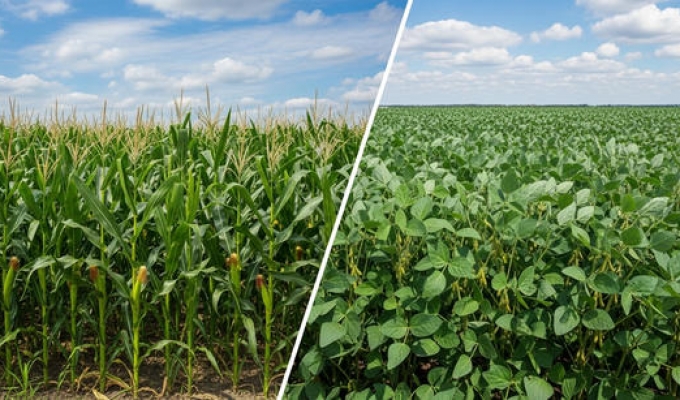For generations, Zimbabwean farmers have understood the rhythm of the land. But in an era of climate change and rising input costs, traditional practices need to be supercharged with smart, sustainable strategies. One of the most powerful yet underutilized tools in a farmer’s arsenal is crop rotation. This isn’t just about changing what you plant; it’s about fundamentally transforming your farm’s health, productivity, and profitability.
This guide will walk you through everything you need to know about implementing a successful crop rotation system in Zimbabwe, from the science behind it to practical, on-the-ground examples.
What is Crop Rotation and Why Should You Care?
Crop rotation is the practice of planting different types of crops in the same area across a sequence of growing seasons. It’s a cornerstone of what is known as conservation agriculture, a farming system that promotes minimal soil disturbance, permanent soil cover, and crop diversification. For Zimbabwean farmers, this isn’t just an abstract concept—it’s a direct path to a more resilient and profitable future.
Research by the International Maize and Wheat Improvement Center (CIMMYT) in Southern Africa has shown that proper crop rotation can increase maize yields by up to 30% compared to continuous maize cropping [1].
The Top 8 Benefits of Crop Rotation for Your Farm
1.Boosts Soil Fertility: Different crops have different nutrient needs. Legumes like soybeans, cowpeas, and groundnuts are nitrogen-fixers, meaning they pull nitrogen from the air and store it in the soil. When you follow a legume crop with a nitrogen-hungry crop like maize, you naturally provide it with the nutrients it needs to thrive, reducing the need for expensive synthetic fertilizers.
2.Breaks Pest and Disease Cycles: Many pests and diseases are crop-specific. When you plant the same crop in the same place year after year (monocropping), you create a permanent buffet for these pests. By rotating crops, you starve them out, naturally reducing their populations and minimizing the need for chemical interventions.
3.Improves Soil Structure: Rotating crops with different root systems—some deep, some shallow—helps to break up compacted soil, improving water infiltration and aeration. This creates a healthier environment for plant roots and makes your land more resilient to both drought and heavy rainfall.
4.Suppresses Weeds: Certain crops, particularly cover crops, can outcompete weeds for resources, naturally suppressing their growth. This reduces the labor and cost associated with weeding.
5.Increases Crop Yields: Healthier soil, fewer pests, and better nutrient availability all lead to one thing: bigger harvests. Studies have consistently shown significant yield increases in rotated systems compared to monocropped fields.
6.Diversifies Your Income: Planting a variety of crops means you’re not putting all your eggs in one basket. If one crop has a bad year or faces low market prices, you have others to fall back on, creating a more stable income stream.
7.Reduces Soil Erosion: The improved soil structure and constant ground cover associated with crop rotation significantly reduce the loss of precious topsoil from wind and water erosion.
8.Lowers Production Costs: By reducing the need for fertilizers, pesticides, and herbicides, crop rotation can significantly lower your input costs, directly boosting your bottom line.
A Practical Crop Rotation Plan for Zimbabwean Farmers
The most common and effective rotation system for many Zimbabwean farmers is the maize-legume rotation. Here is a simple, effective 2-year plan:
|
Year |
Season 1 (e.g., Rainy Season) |
Season 2 (e.g., Winter/Dry Season) |
|
Year 1 |
Maize (a heavy feeder) |
Cowpeas or Groundnuts (a nitrogen-fixer) |
|
Year 2 |
Soybeans (a nitrogen-fixer) |
Wheat or a Cover Crop (to protect the soil) |
This is just a starting point. Your ideal rotation will depend on your specific location, soil type, and market opportunities. Explore our Production Guides for more ideas on crops that fit your farm.
Frequently Asked Questions (FAQ)
Q: How do I start with crop rotation if I have a small piece of land?
A: You can divide your land into two or more plots. In the first year, plant maize in one plot and a legume like cowpeas in the other. The next year, switch them. Even this simple rotation will start improving your soil health.
Q: What are the best legumes to use in a rotation with maize in Zimbabwe?
A: Soybeans, cowpeas, groundnuts, and sunn hemp are all excellent choices. They fix nitrogen, provide a secondary source of income or food, and help break pest cycles.
Q: Can I still use fertilizer with crop rotation?
A: Yes, but you will likely need less of it, especially nitrogen fertilizer after a legume crop. You should always get your soil tested to understand its specific needs.

